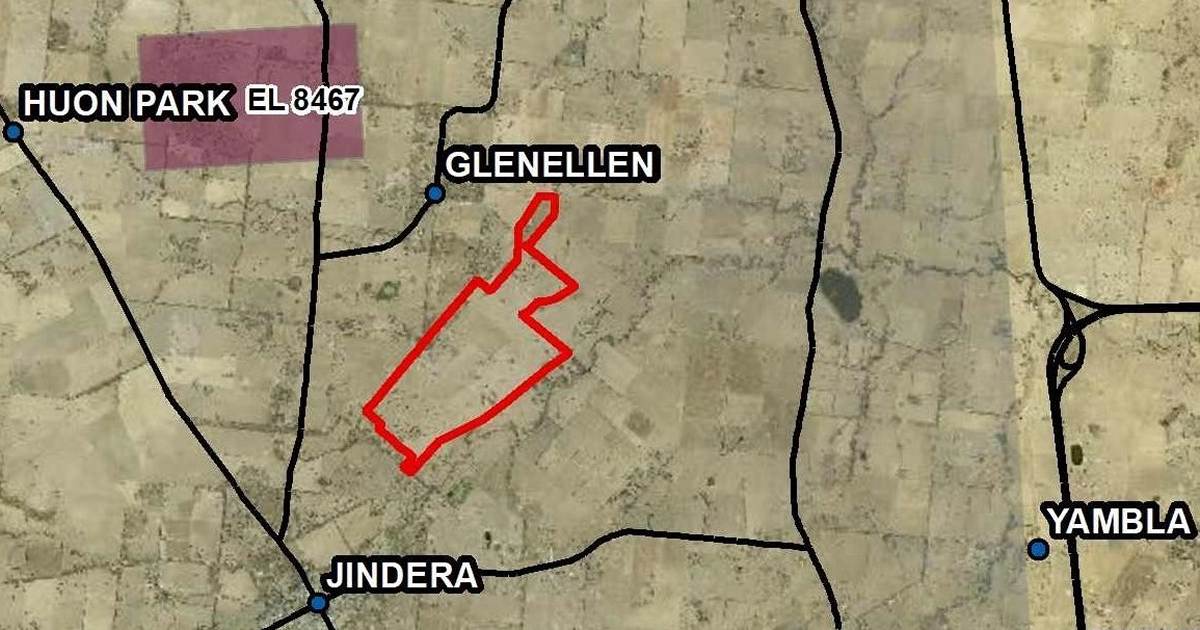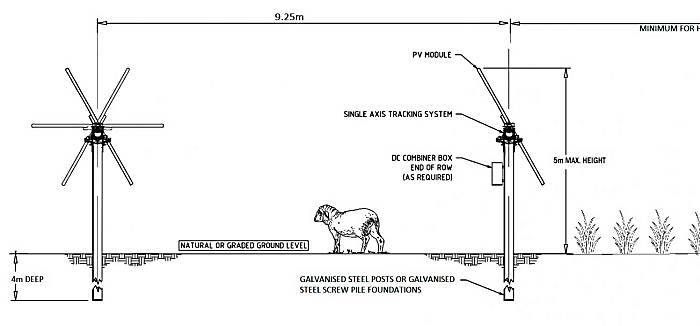The exhibition period for a proposed major solar farm in New South Wales that will incorporate “agri-solar” principles has commenced.
Glenellen Solar Farm is a proposed 200MW(ac) project located 16km north of Albury in southern NSW, between the towns of Glenellen and Jindera in the Greater Hume local government area. The project was originally proposed by CWP Renewables and sold to Trina Solar (Australia) in February this year.
The clean power facility will be comprised of approximately 416,000 Trina solar panels set on single-axis tracking systems to boost energy output. Trina Solar says it is proposing to use bifacial panels, which capture light from both sides.
Power Conversion Units (PCU’s) will be located throughout the site (likely to be approximately 2.5 MW to 10 MW each), which include inverter/rectifiers, ring main units and medium-voltage and/or high voltage step-up transformers. While battery storage was part of the original concept, this aspect is no longer proposed. Grid connection will be via an existing TransGrid substation on the site.
Trina Solar says the facility will generate enough electricity to supply the equivalent of more than 94,000 households and will avoid 320,000 tonnes of carbon emissions annually.
An “Agri-Solar/Agrivoltaics” Approach
The site is classified as Important Agricultural Land (IAL) and currently used mostly for grazing and some cropping. The potential loss of agricultural land tends to raise hackles and leads to resistance within local communities and governments, making it more difficult and costly for projects to get over the line. But during the operational phase of the Glenellen facility, it is proposed the site could continue to be used for agricultural purposes such as sheep grazing, or perhaps even cropping.
Trina Solar’s intention to use an agrivoltaics approach isn’t just about keeping locals and the powers-that-be happy. The Environmental Impact Statement for Glenellen Solar Farm notes that without sheep, alternative methods of weed and pest management would need to carried out, such as chemical spraying or mechanical mowing.
“Fuel reduction through grazing is an added benefit from the perspective of good practice bushfire prevention”
On a related note, another major proposed PV facility practically on the doorstep of the Trina Solar project, Jindera Solar Farm, has been granted conditional consent by the Independent Planning Commission of NSW, but is awaiting a further determination. Greater Hume Council had been opposed to the development, with one of the reasons being the loss of agricultural land. One of the IPC’s conditions is that grazing should be able to continue within the development footprint where practicable.
The exhibition period for Glenellen Solar Farm closes on November 30. Assuming it gets a green light very soon after that, Trina Solar intends for construction to commence early next year, with the facility to be commissioned and operational in 2022. The project is expected to create more than 100 jobs during the 12 – 18 month construction period, although in some documentation the number of jobs is put at up to 200.
The project will be a part of Trinasolar’s global portfolio of solar farms that includes projects in the UK, EU, Asia and South America. Further information on Glenellen Solar Farm can be found here and on the NSW Government’s Major Projects website.



 RSS - Posts
RSS - Posts



Speak Your Mind